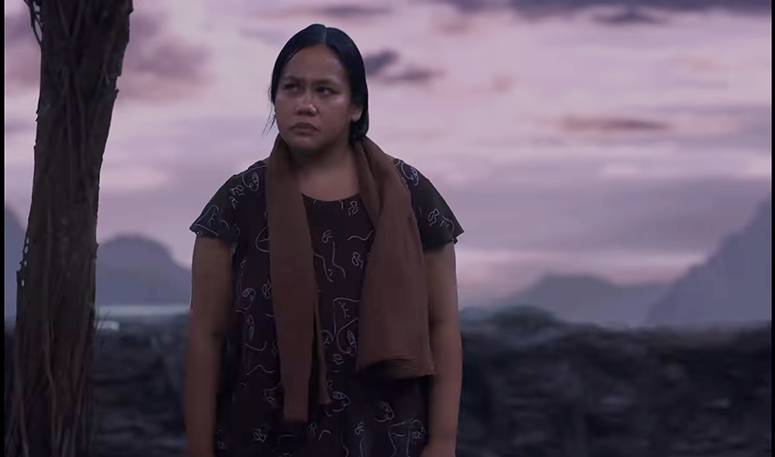'Isang Himala': A cinematic miracle
Isang Himala is Pepe Diokno’s faithful and unfaithful reimagining of Ishmael Bernal’s 1982 classic Himala. With aplomb, thespian Aicelle Santos reprised National Artist Nora Aunor’s iconic role of Elsa, a foundling and single maiden who claimed to have experienced a Marian apparition in the godforsaken town of Cupang. It was in the same place where she performed her so called faith healing. Himala.
The film was the only musical entry in the 10 films that competed in the recently concluded Metro Manila Film Festival. Musical films, shown to a public that’s not accustomed to the genre, are always a dicey attempt. Isang Himala did not do well at the tills. (The film was shown in a limited number of theaters, mostly in VIP cinemas, like at the Power Plant cinema in Rockwell, where a movie ticket costs P600.)
“It could be that the Filipino audience is not so familiar with the musical as a film format,” explains Patrick Flores, a film critic and professor of Art Studies at UP Diliman, on the performance of Isang Himala in theaters.

“Or that Himala as a reference is remote from the current audience. Or that it did not have popular elements it could build on like a recognizable plot or well-known performers,” Flores added. Isang Himala had theater actors essaying excellent performances in the film.
Santos’ Elsa has more movements than Aunor’s portrayal. But the former breathed new life to the role and owned it, like a star owning its own space in a constellation of many a luminary. Her restraint was also commendable. Gifted with enthralling yet heartfelt vocal chords, Santos was a joy to watch. She, too, was provoking in her moments of silence. (If I were a judge at the recent film festival, I would allow Aicelle Santos to wrestle for a tie with Judy Ann Santos, brilliant in her almost silent portrayal in Espantaho, for the Best Actress Award. These two Santoses gave sterling performances at the 50th edition of the MMFF. Though another Santos, Vilma Santos, was good in her vengeance-is-mine portrayal of a mother of a rape-murder victim in Uninvited, her acting was something familiar to the moviegoing public.)

Kakki Teodoro as Nimia, the harlot who put up a bar with her father amidst the barren Cupang, delivered a memorable performance. Her singing voice was not devoid of pain, of expectation, of hopelessness. It was a voice that said the spotlight should also be speckled on someone like Nimia, a village prostitute, a seller of flesh, a direct contradiction to Elsa, a seller of faith. Teodoro’s faith in her caliber as an actor was rewarded when she was noticed by the MMFF jury and bestowed the trophy for Best Actress in a Supporting Role.
Bituin Escalante sang and acted in abundance, too, as Aling Saling, the woman who adopted Elsa when she found her on a hill as a newborn. Escalante’s vocal pyrotechnics did not overpower her acting faculties. With clarity and power, she displayed a stunning performance—both in singing her disbelief on Elsa’s healing power and acting out her submission to pressure.

The rest of the cast were incandescent in their singing and acting. That was not a miracle because every performer was a habitue of the stage, where an exemplary live performance does not merit a take two.
The success the movie did not receive at the box office, however, did not equate to the superiority of Isang Himala. Not all the 10 films are worth watching (I saw seven movies) but Isang Himala is a brew that needs to be savored. It is well made in its imperfection.
Diokno knew the material he was working with; the script, of course, was done by the original writer of Himala, National Artist Ricky Lee, with Diokno as co-writer. Aside from the classic Himala, the screenplay was also based on the script of the theatrical production of Himala, Isang Musikal, a collaboration of Lee and Vincent de Jesus.

Even its cinematography by Carlo Mendoza is a statement all its own, lyrical in its stark beauty that was captured frame after frame. Commendable, too, is the theatrical production design of faux boulders and makeshift houses. The leafless tree on a hill, a central element in the original, saw its rebirth in the new film. The tree, lifeless in appearance, was given its own moment, its own life, its own light.
Isang Himala is a cinematic miracle because we don’t produce many films like this. The last musical movies I saw were Ang Larawan (2017, Curtain Musicat Production) and I Do Bidoo Bidoo: Heto nAPO Sila! (2012, Unitel/Studio 5). Film producers Diokno and Madonna Tarrayo probably knew that producing Isang Himala was a gamble and yet they put all their bets on it. With their excellent output, they still won.
Our identity is not inferior
When my nieces and I watched the musical film at Power Plant, there were only nine people at the cinema. The dismal performance of Isang Himala at the tills, compared to the cheerful reception to the musical film Wicked, shows that we don’t love our own. Many perhaps still have that perception that an apple is better than a mango, or that our identity is inferior to other foreign cultures. I lament that Isang Himala, a significant and substantial film that should have been patronized by those who craved for “quality Filipino films,” was not even in their radar.
Colonial mentality is a thing of the past, a trite phrase. But it is still in the psyche of many who are blinded by the truth that the Filipino is a global powerhouse of talent and creativity. If it was not that mentality to put the blame on, should I put it on producers still making Pinoy slapsticks masquerading as drama-comedy? Film appreciation is based on a personal taste, that’s for sure. But it is also not true that only the high-brow crowd can appreciate a musical film like Isang Himala. Many of my students at Saint Vincent College of Cabuyao, a private community college in Cabuyao City, were disappointed they did not see the movie in the nearest cineplexes in the area.
Holding on to faith
Isang Himala shows the fatalistic character of the Filipino. When medical science cannot provide a remedy for a physical sickness, we hold on to himala. When people are poor and cannot afford medication, they cling to himala. In times of need and desperation, many people have the tendency to treat God as a vending machine. The film showed that and showed more of what God is and what God is not.
It is a disturbing journey to the Filipino psychological makeup. Even if Elsa admitted that there was no truth to the miracles she performed, people still believed her. But why? Himala.
Whether or not Isang Himala experienced an injustice when the number of cinemas showing it during the festival was drastically reduced from 32 theaters on Dec. 25 to 24 theaters a few days after is a question of business strategy for cinema houses. Then three days before the year ended, it was down to nine theaters. Walang himala.
Isang Himala warrants another chance at the cinema one day. That it will happen and that the people will troop to the theaters when it materializes is a miracle I will pray for.
The Filipino people deserve this cinematic miracle.



